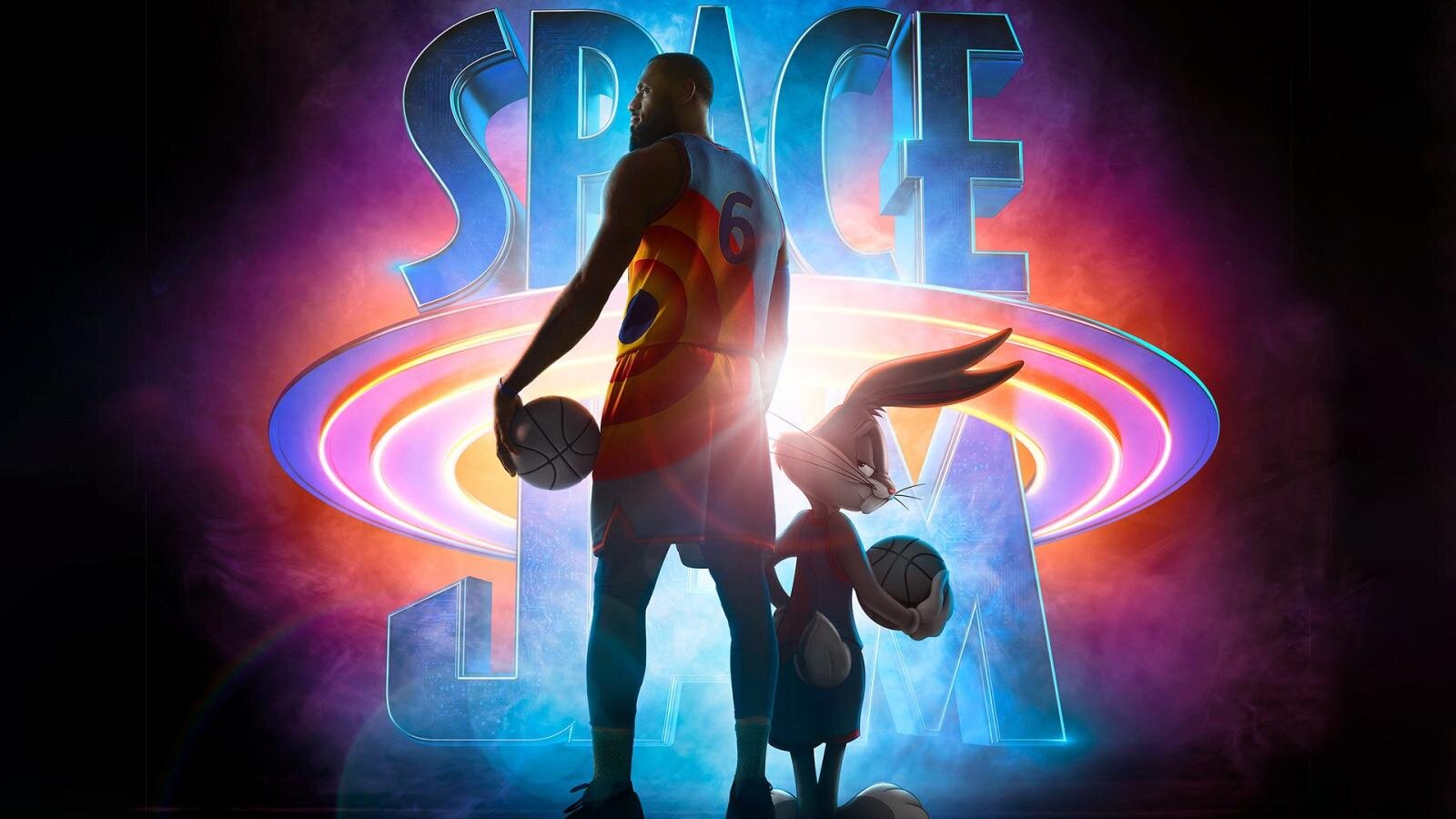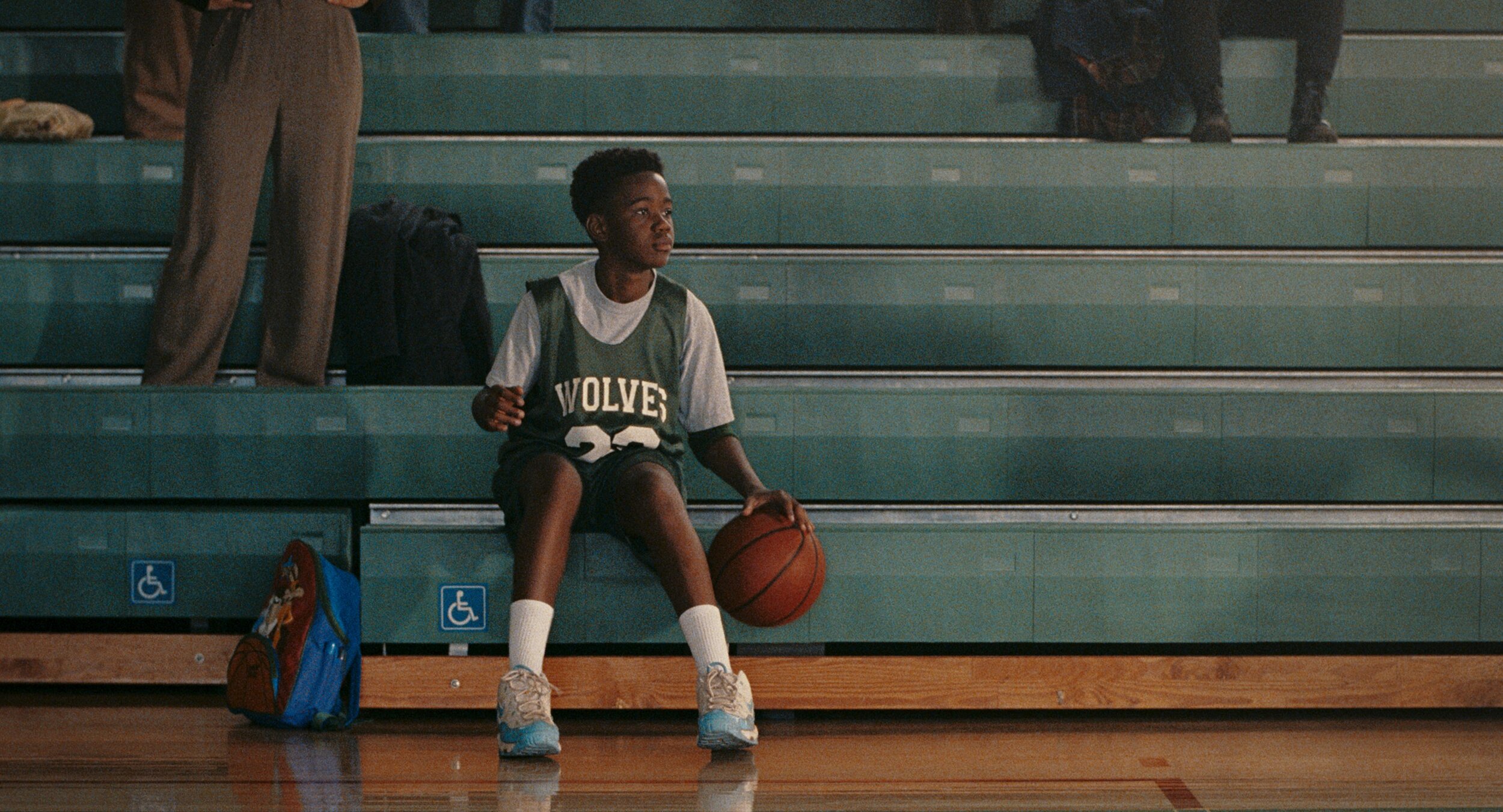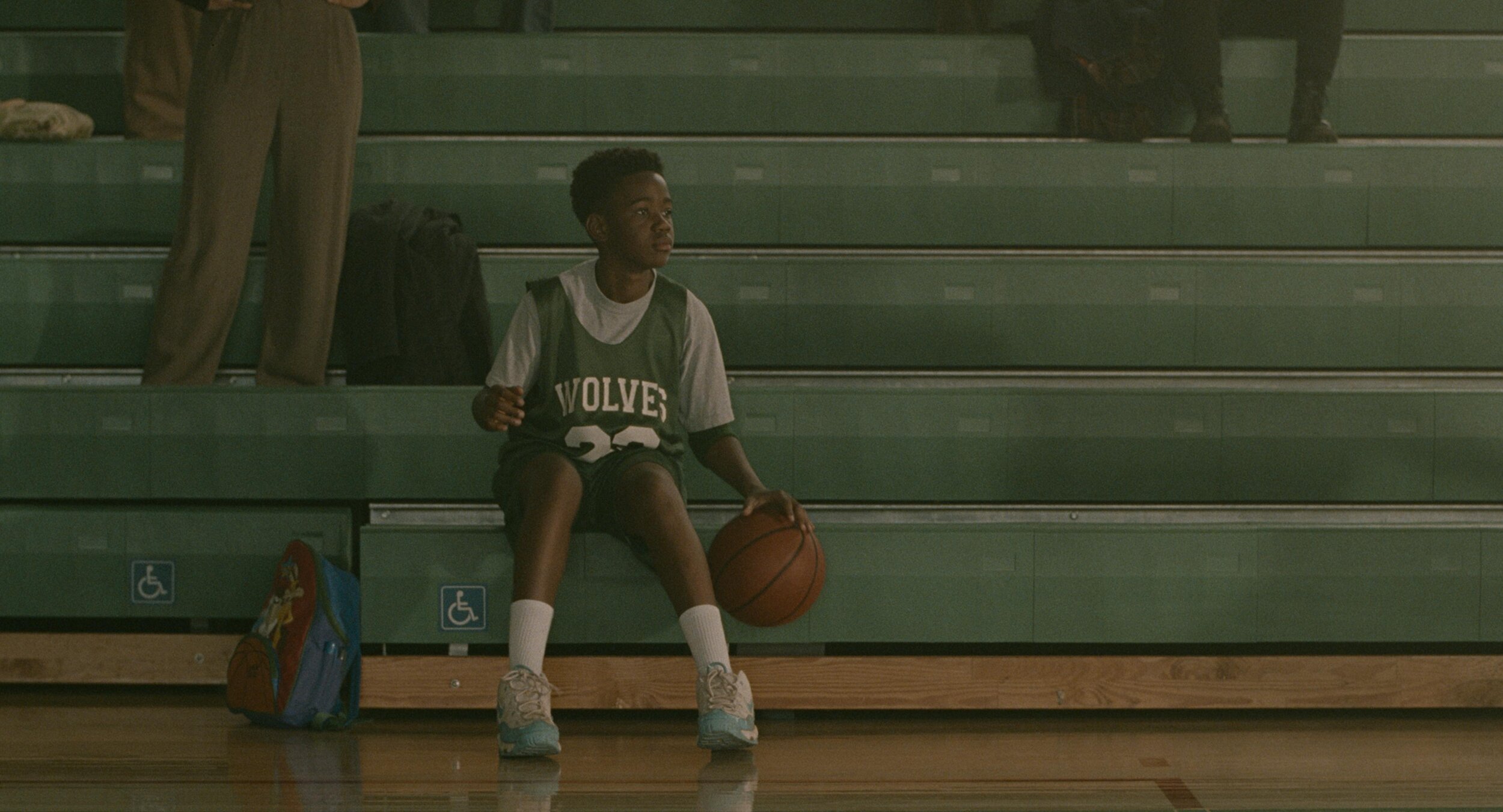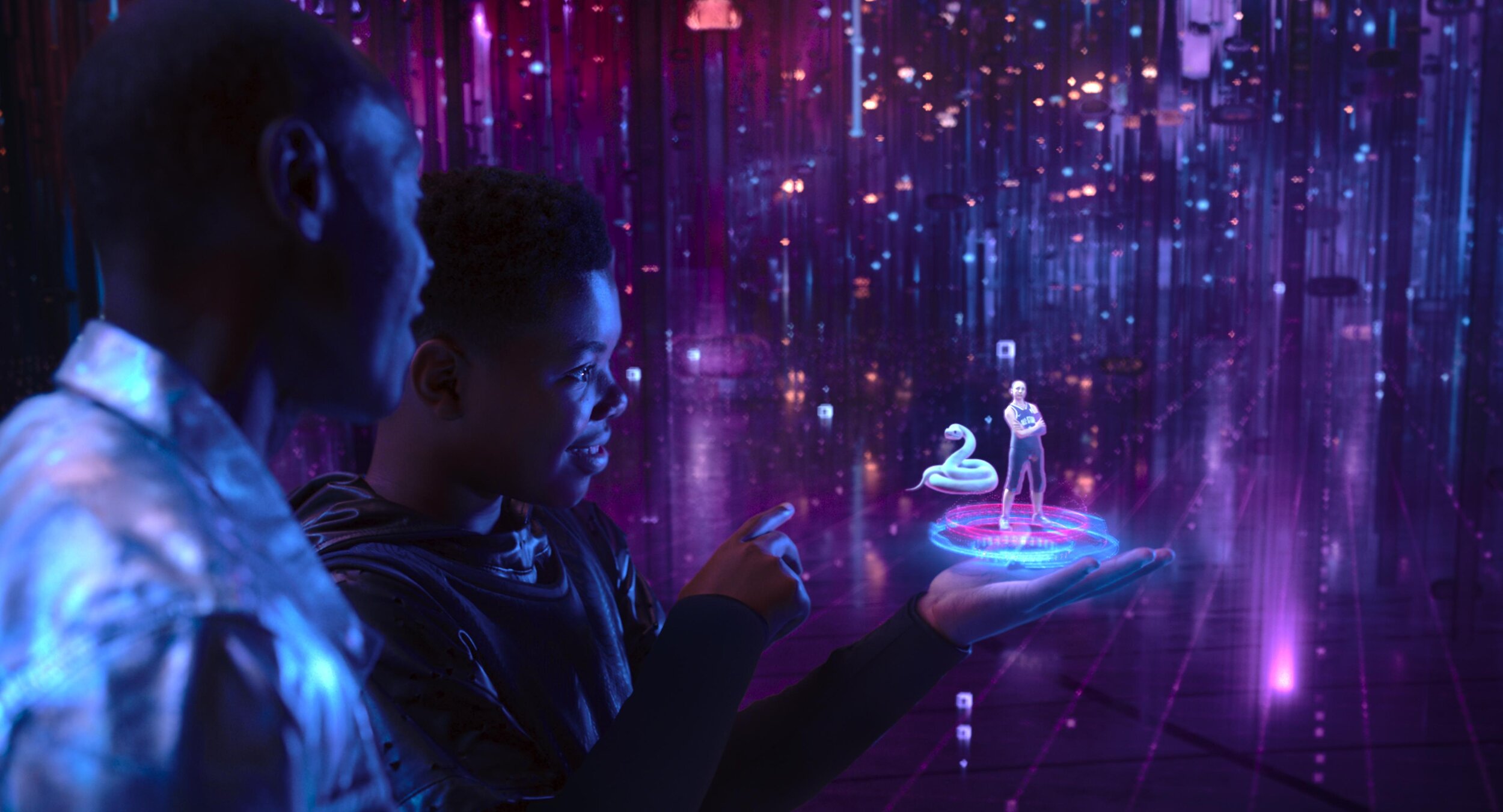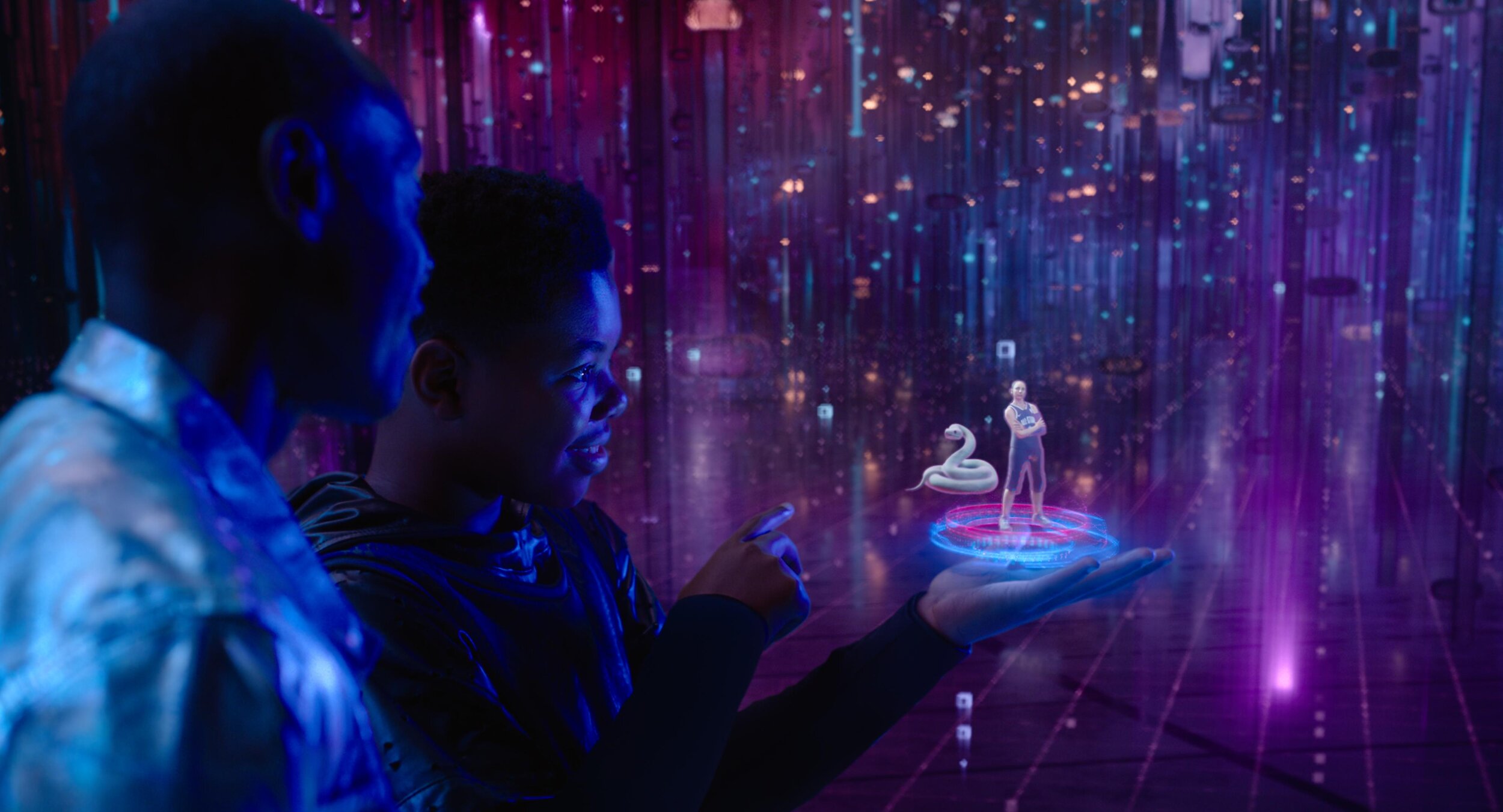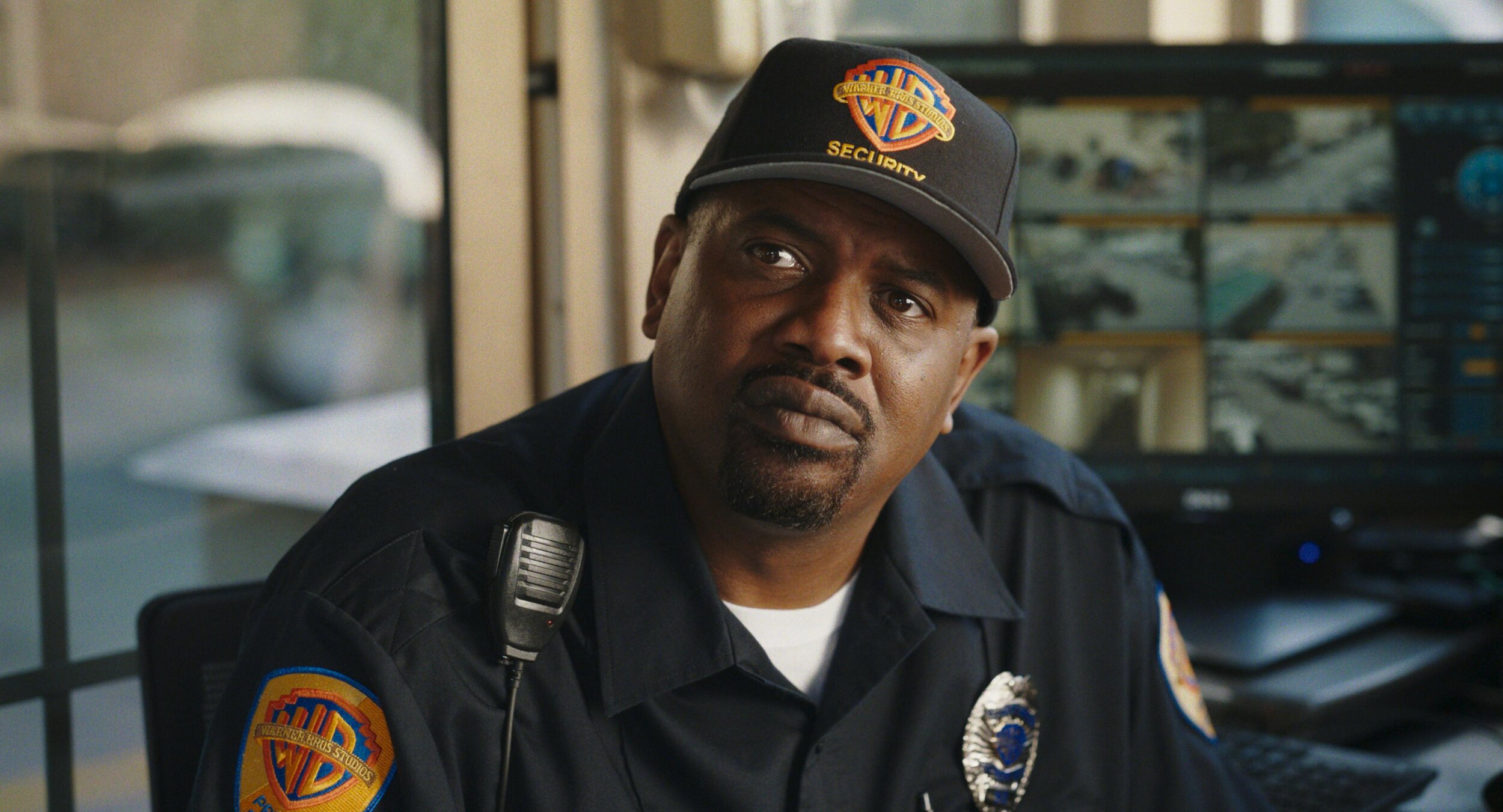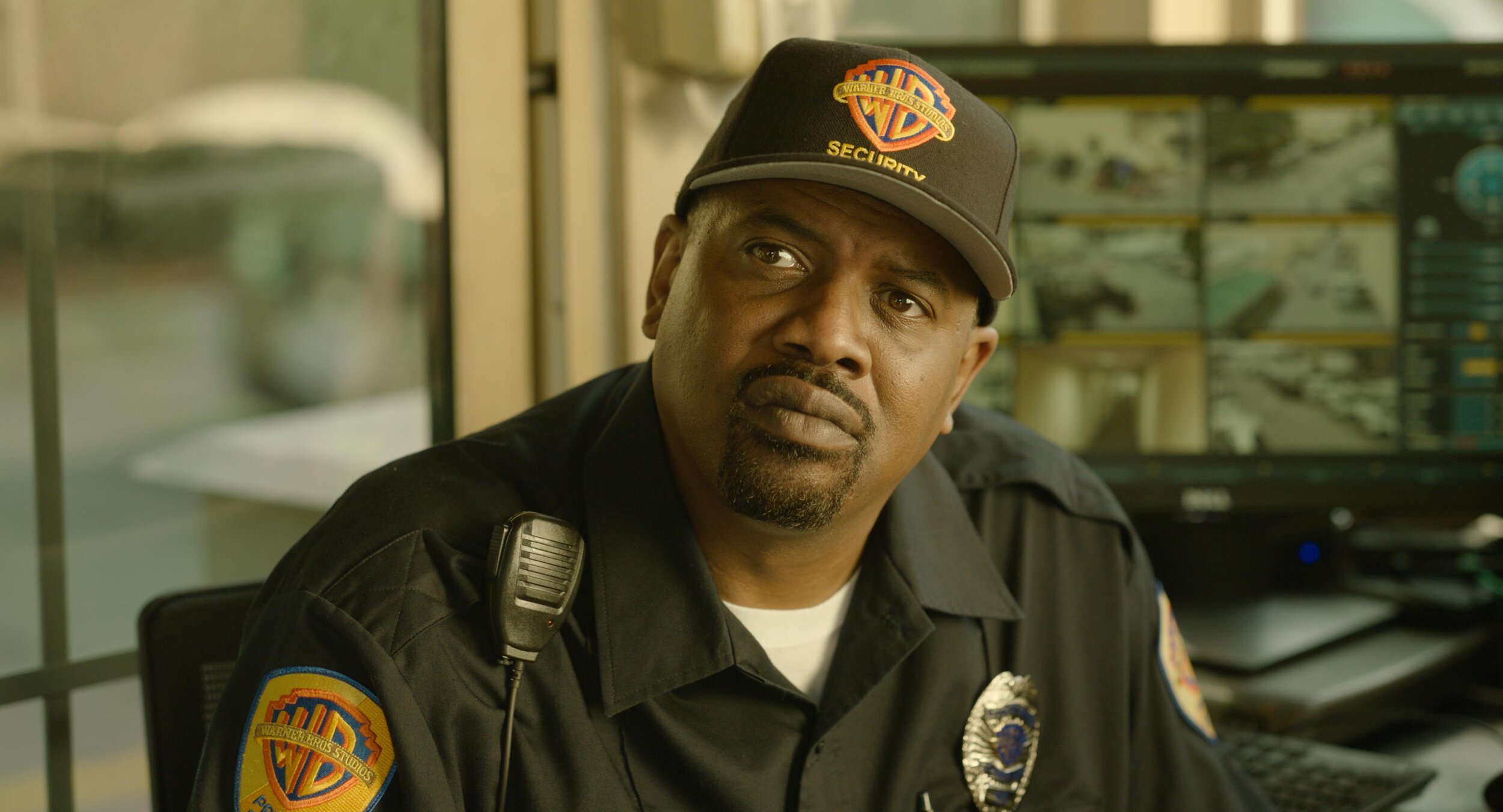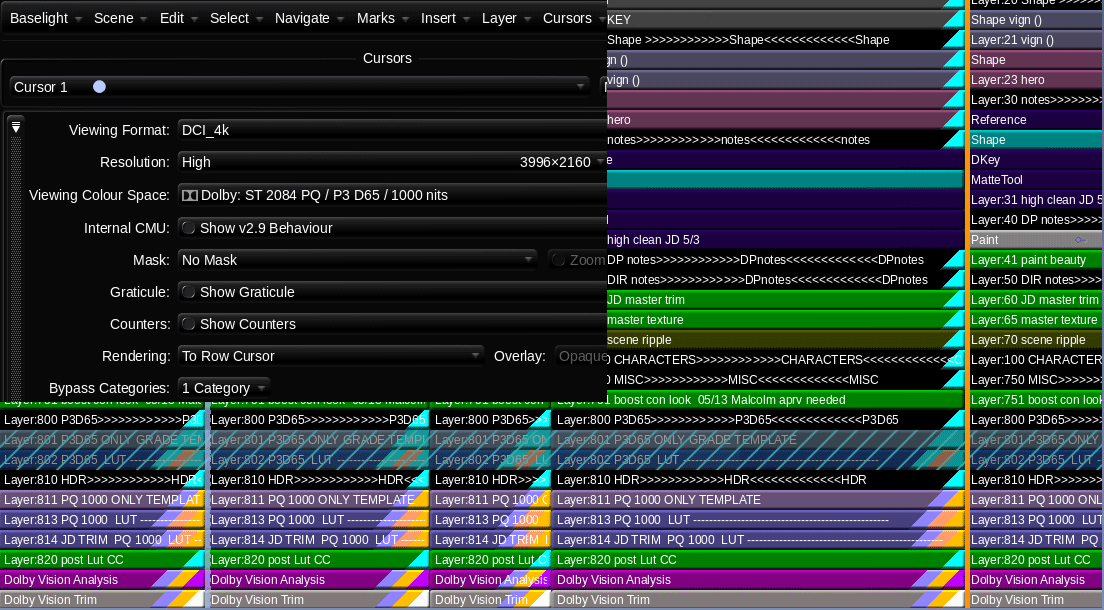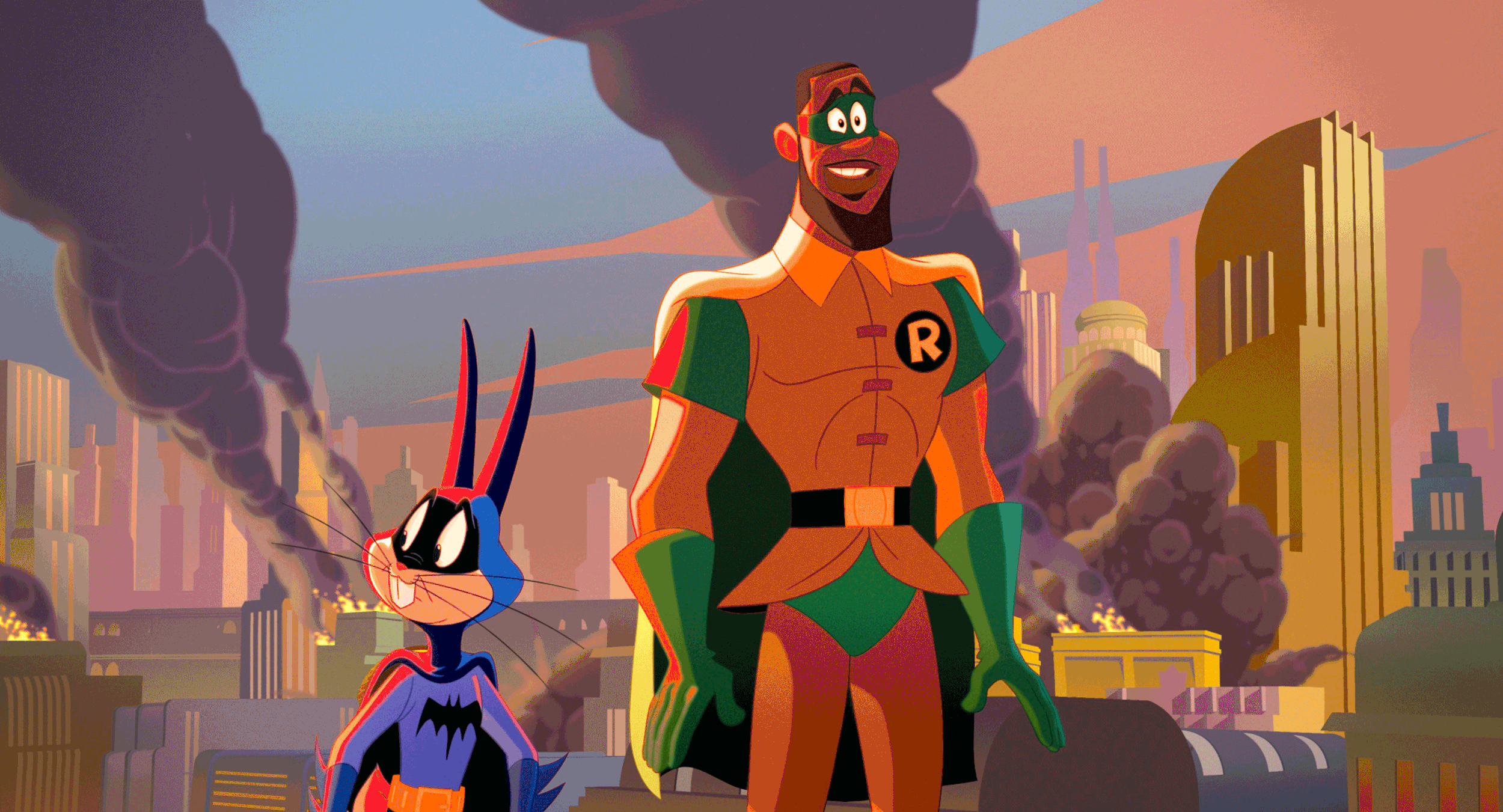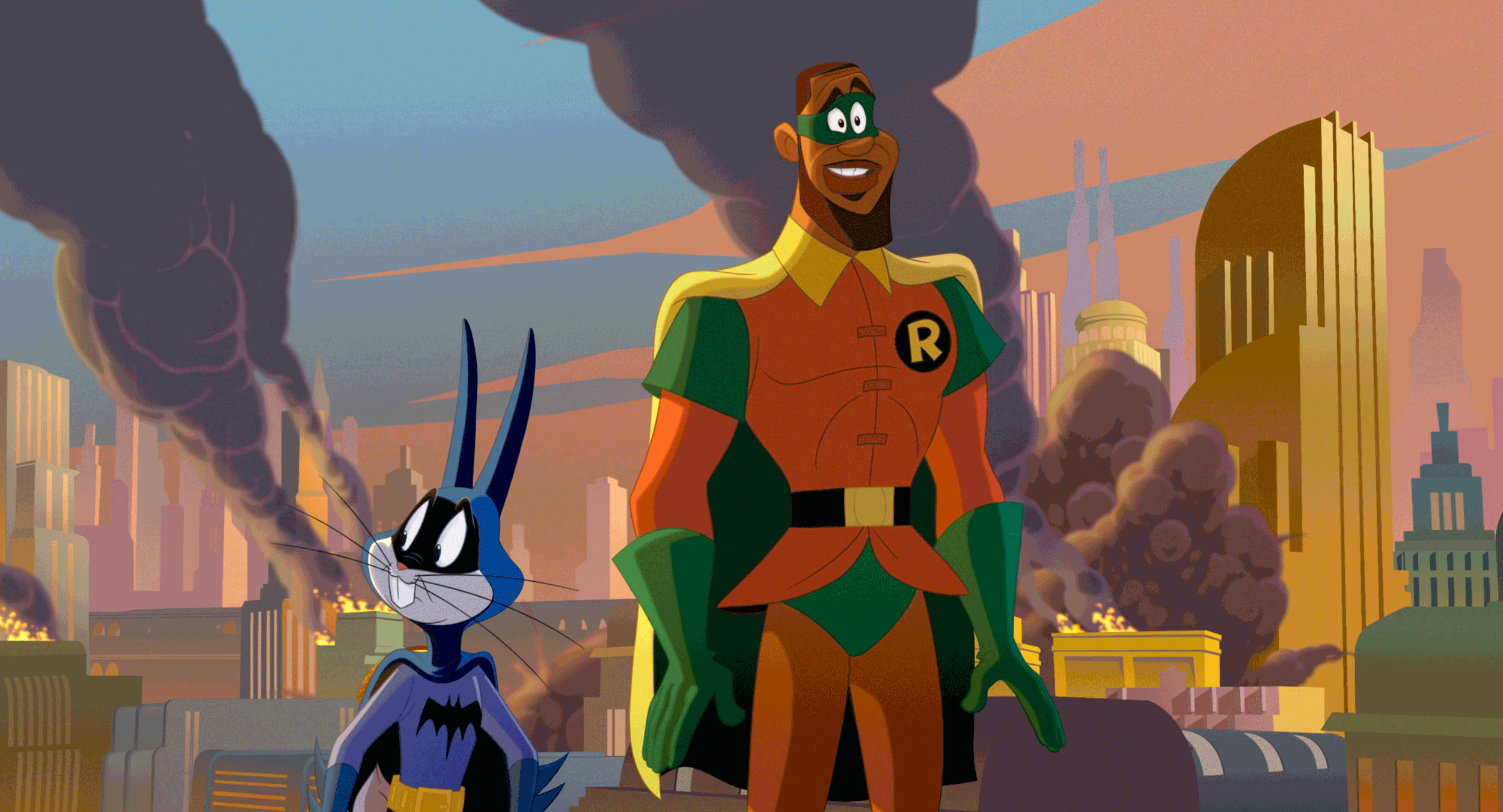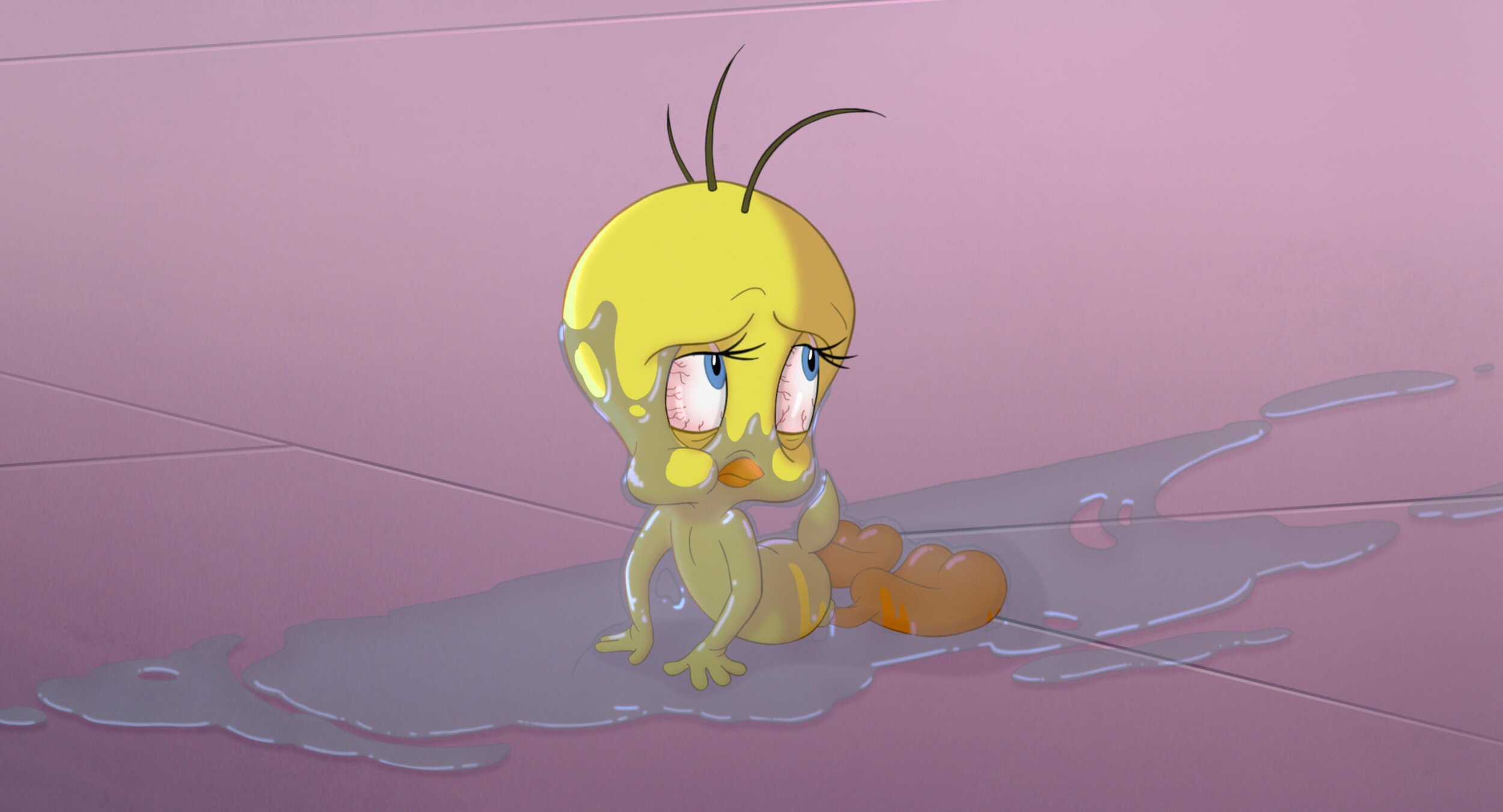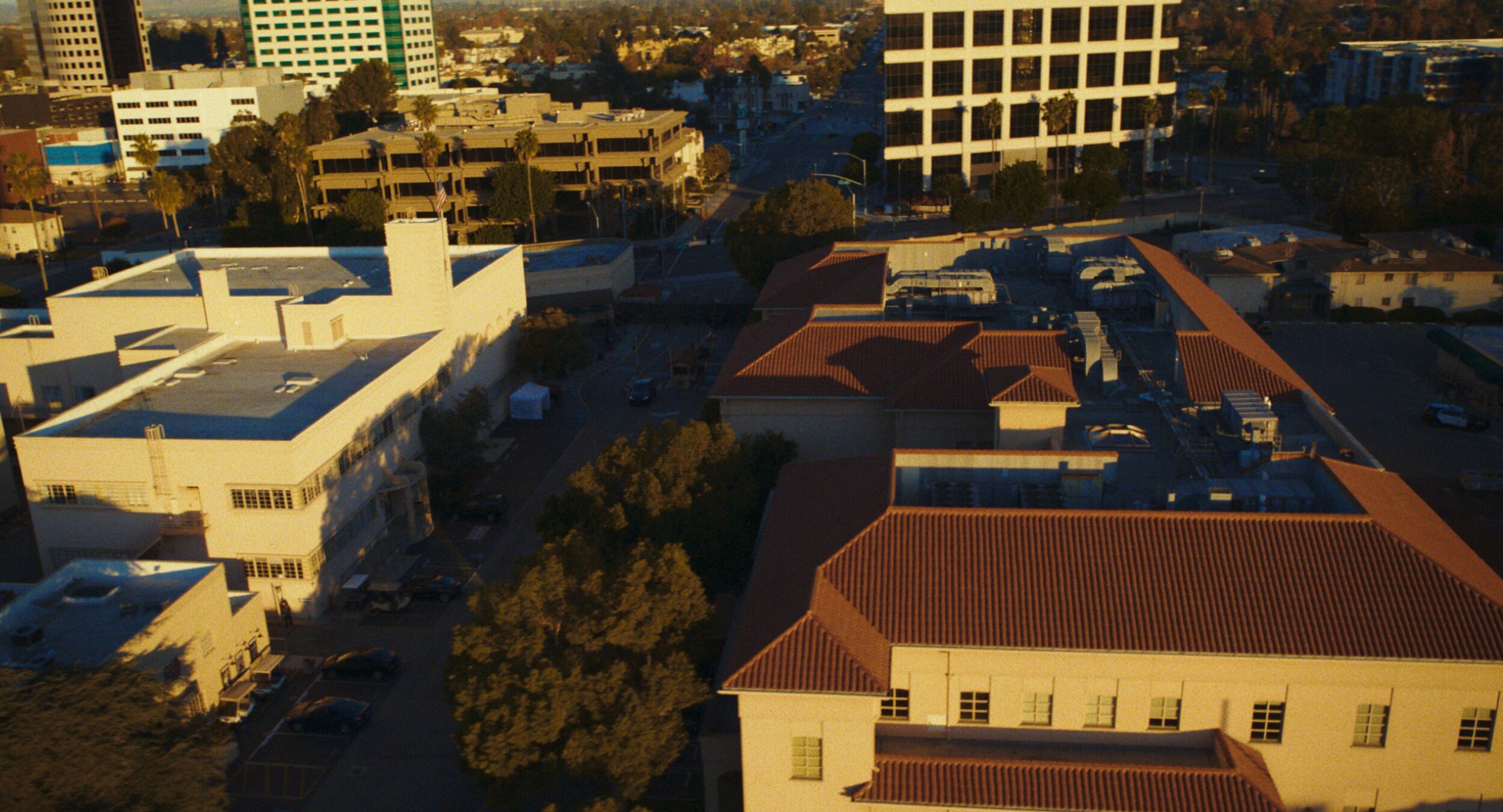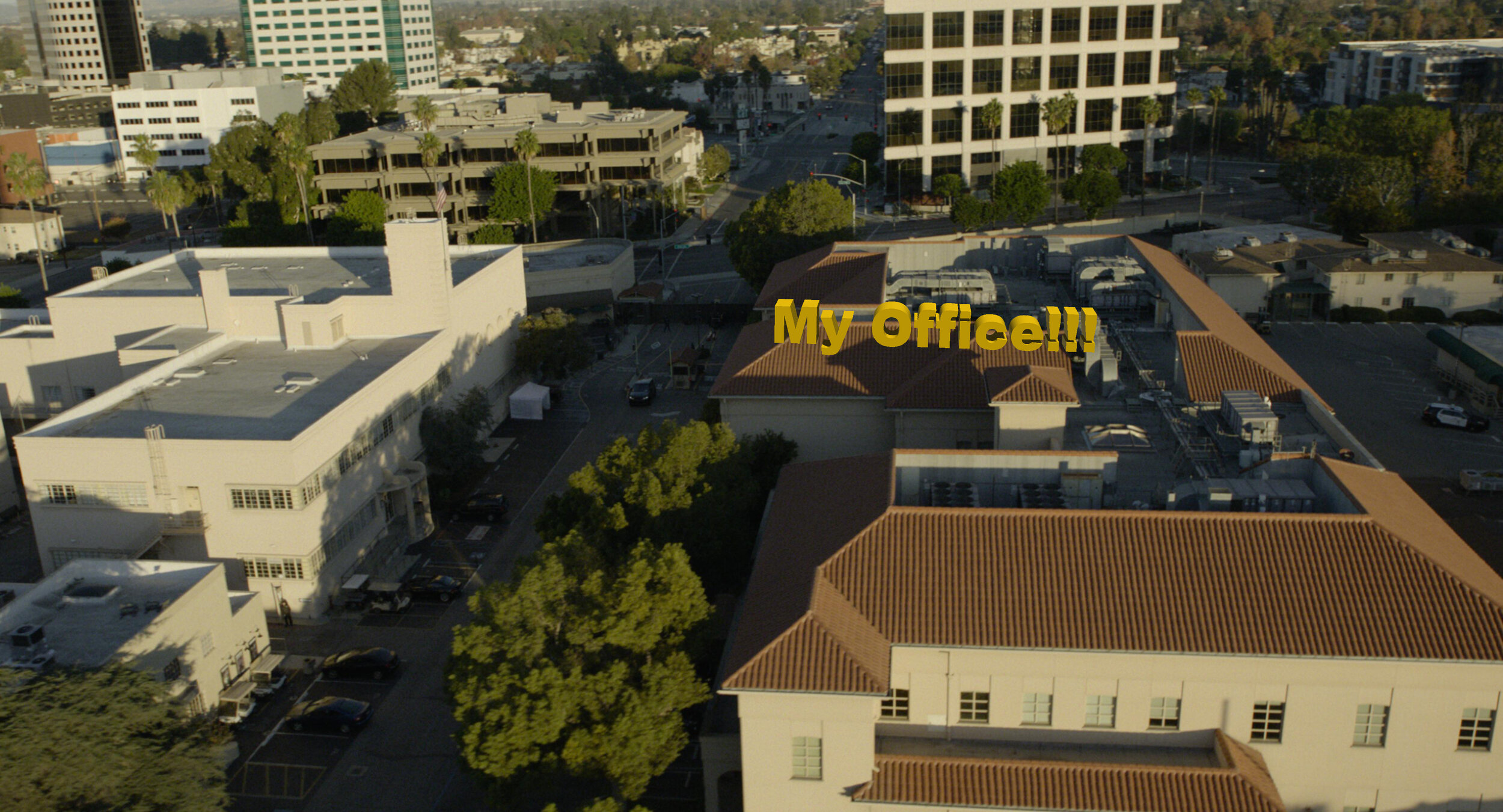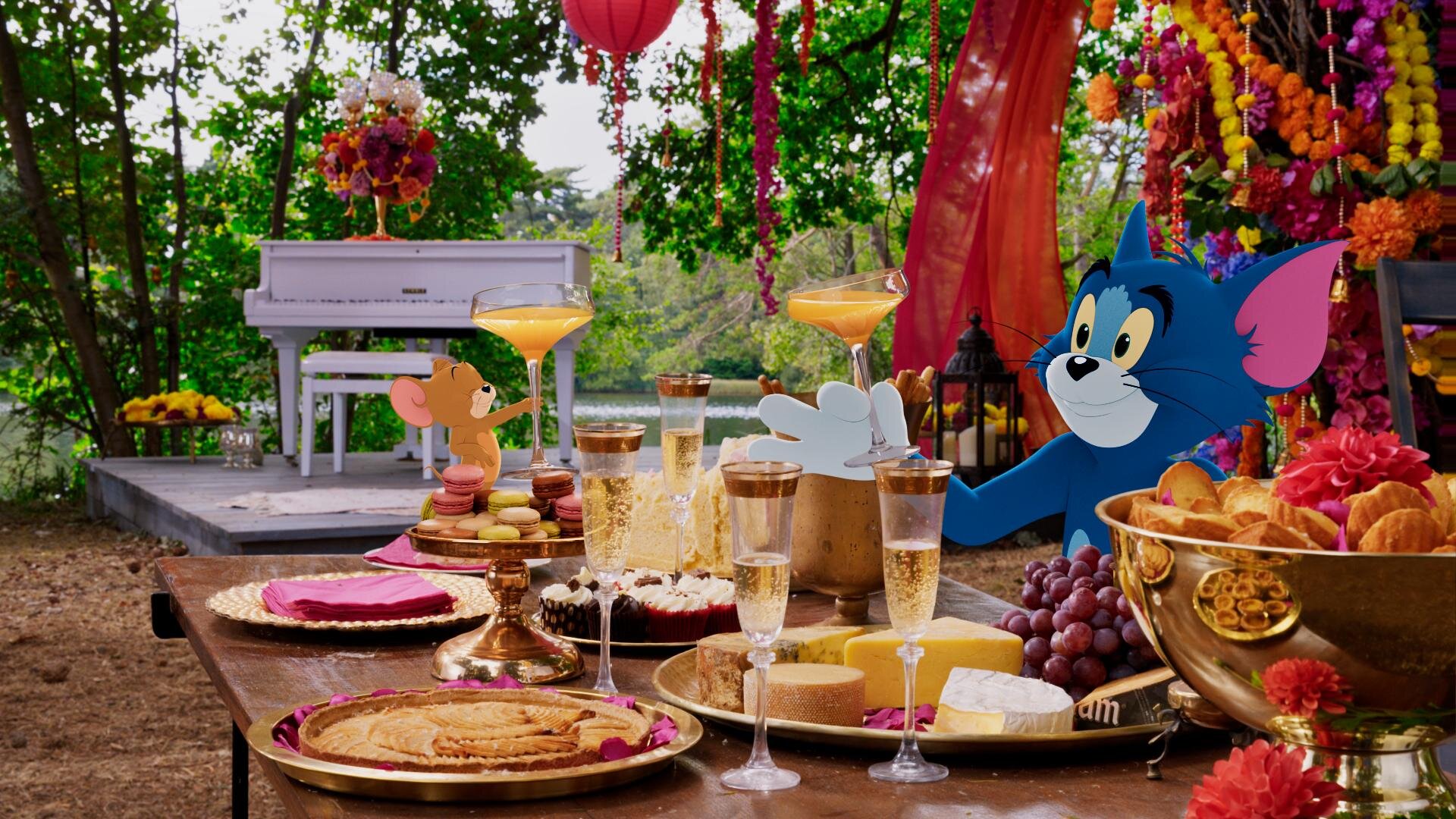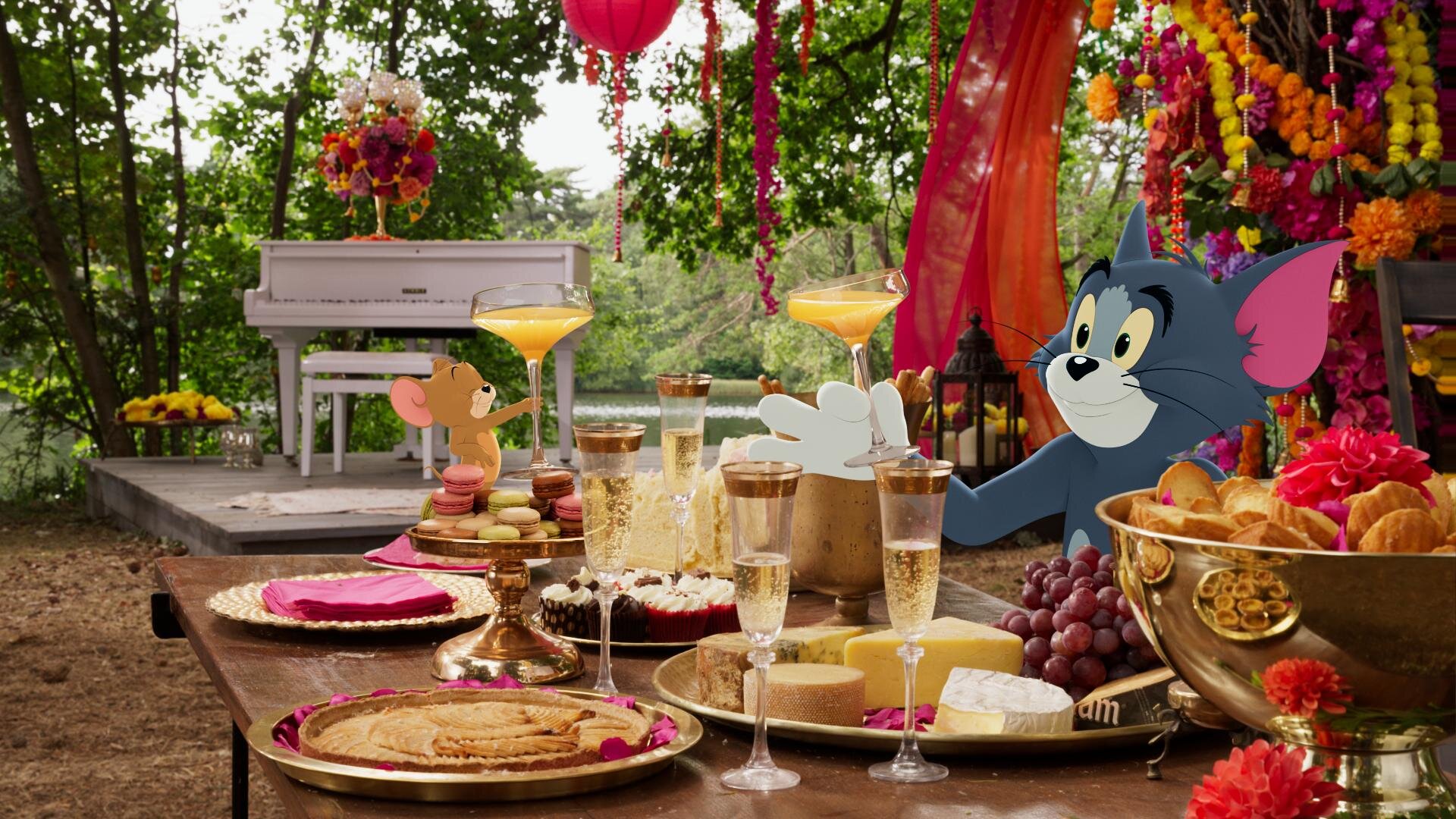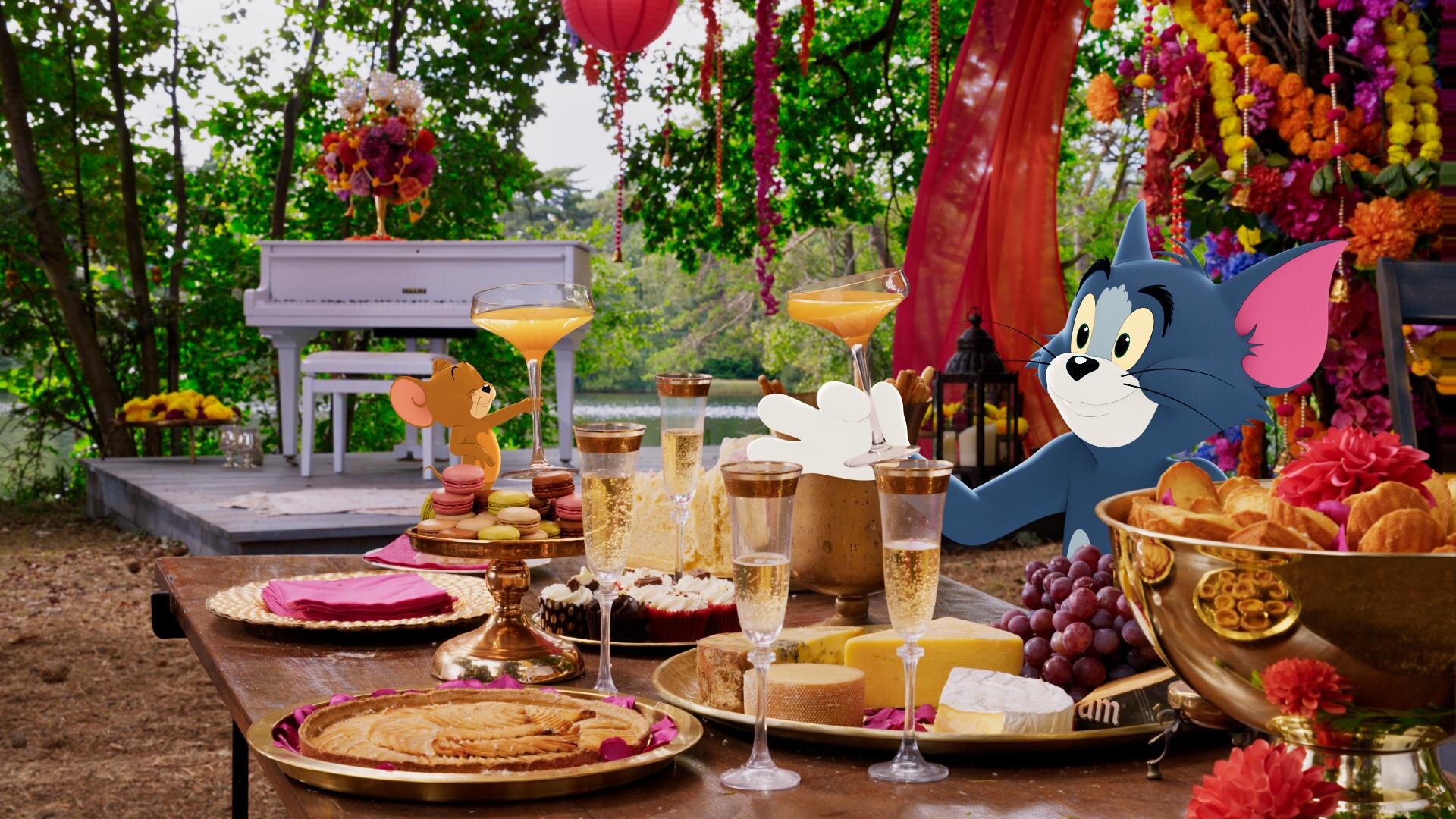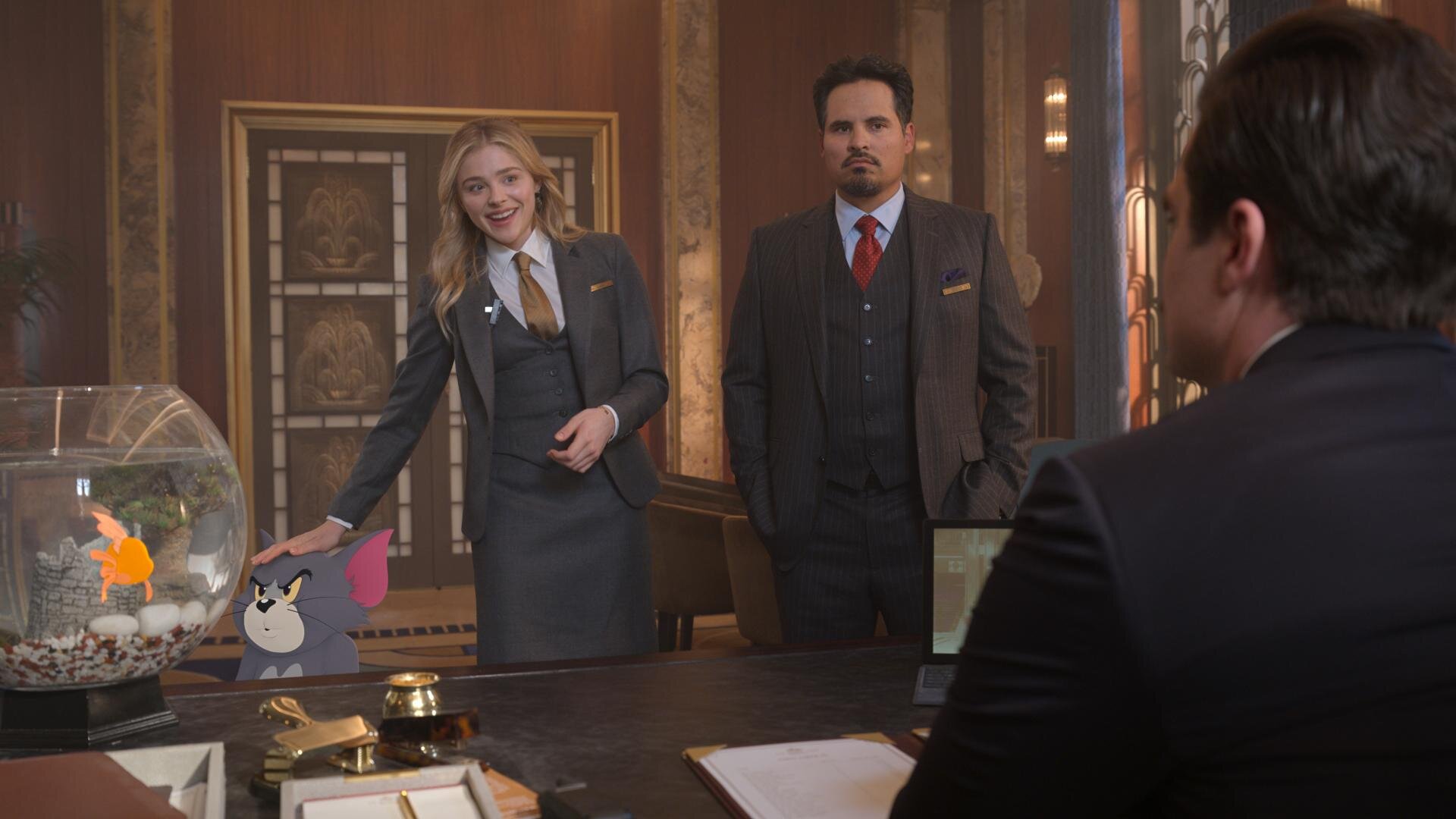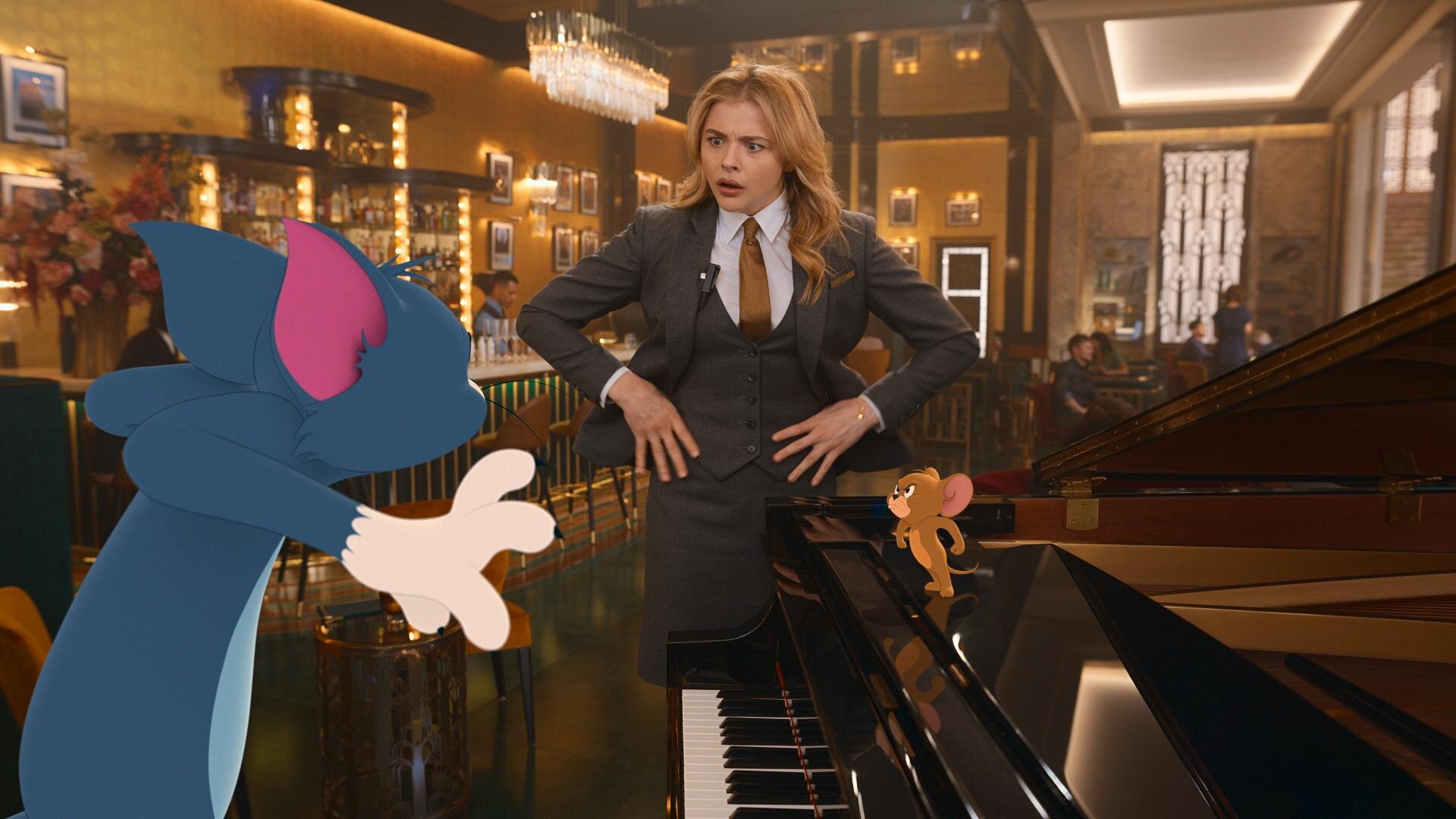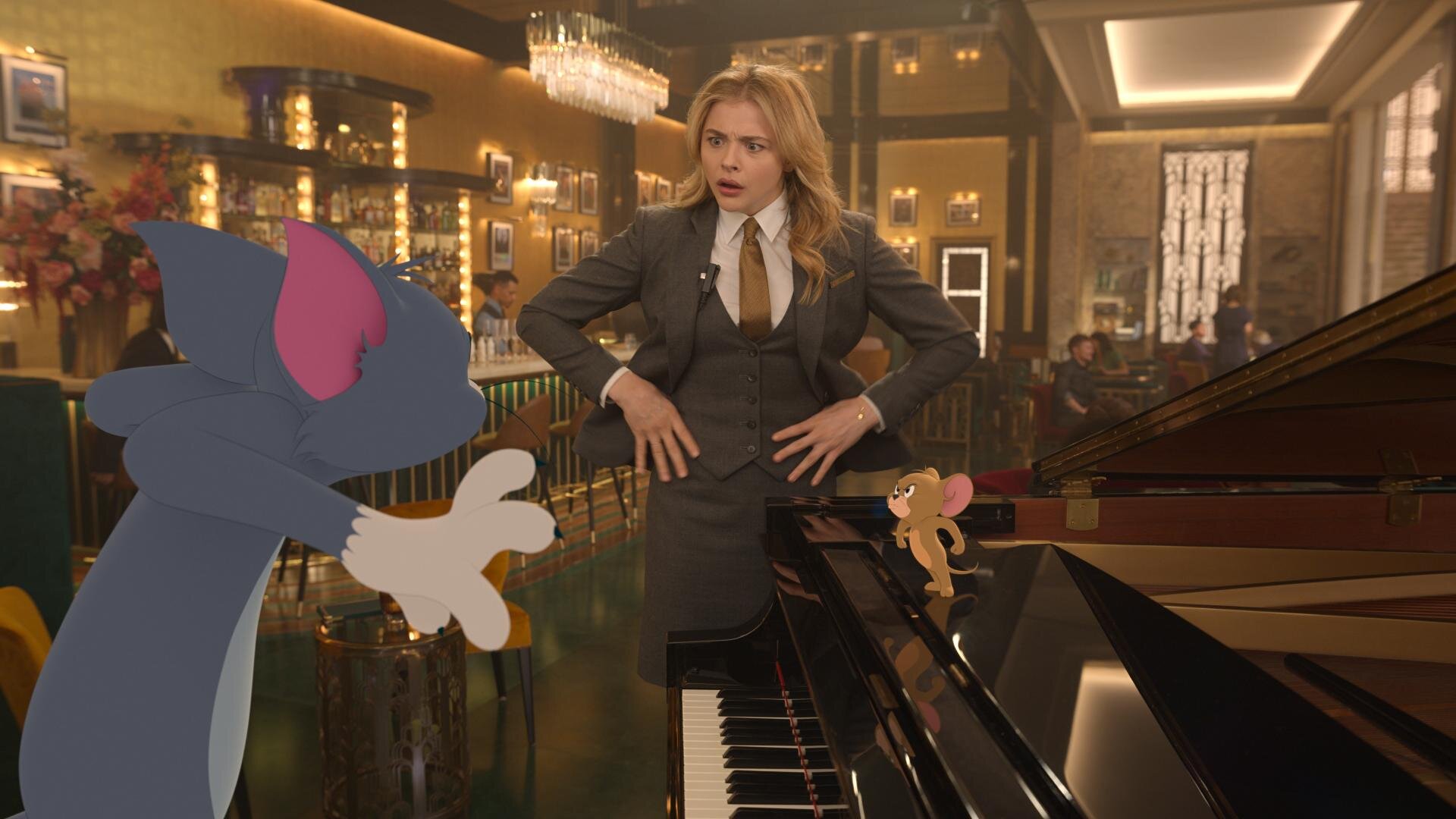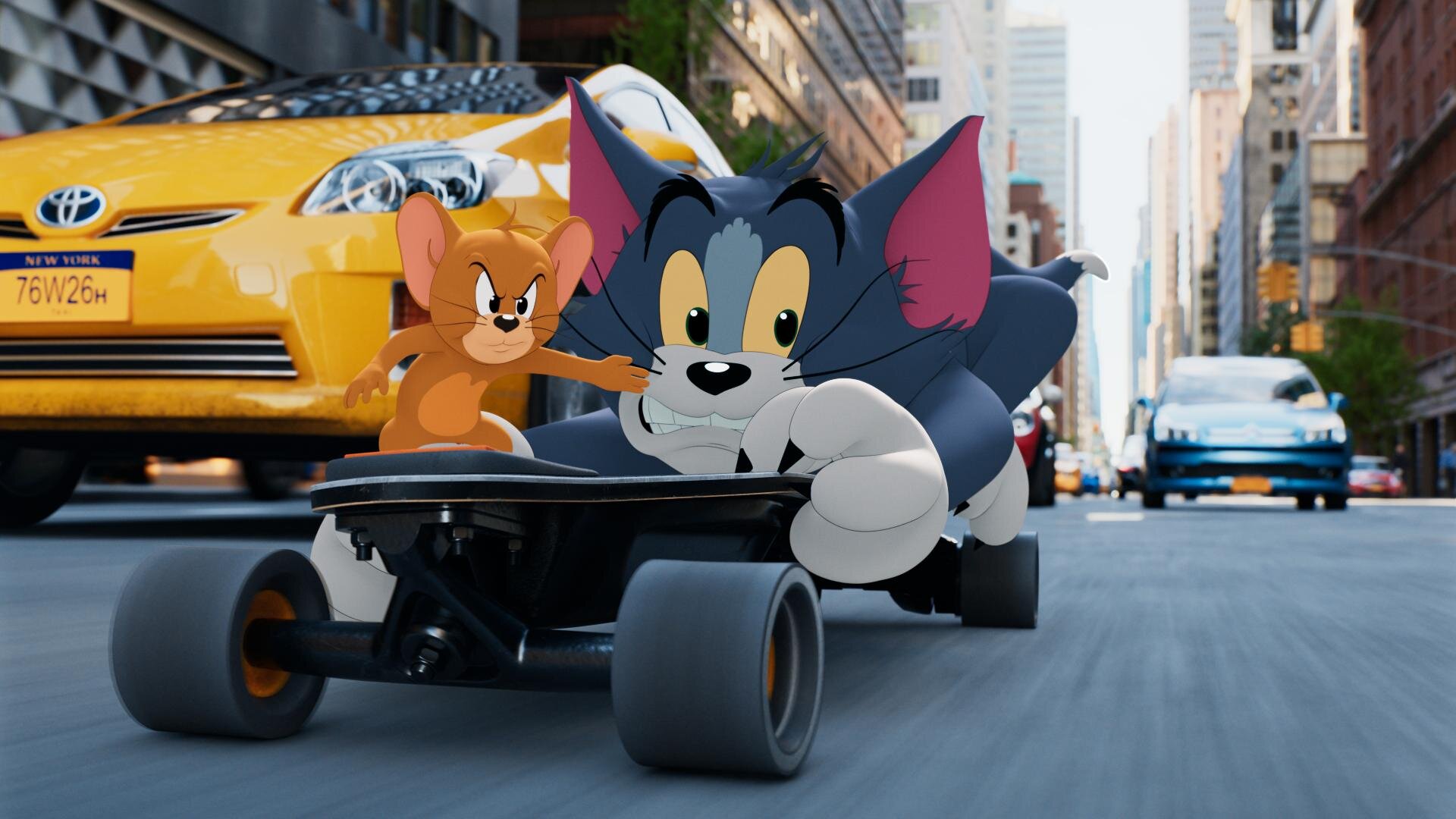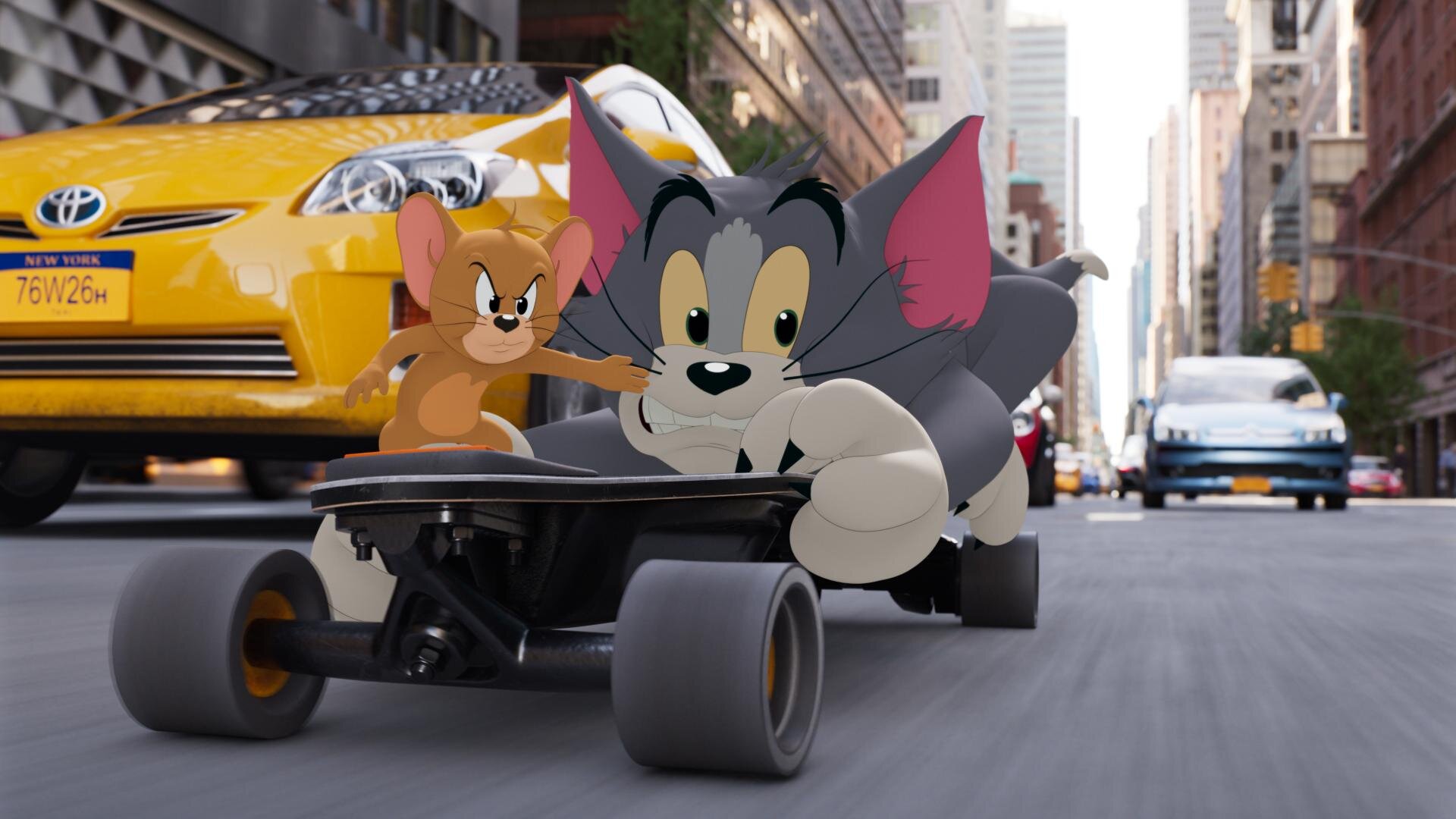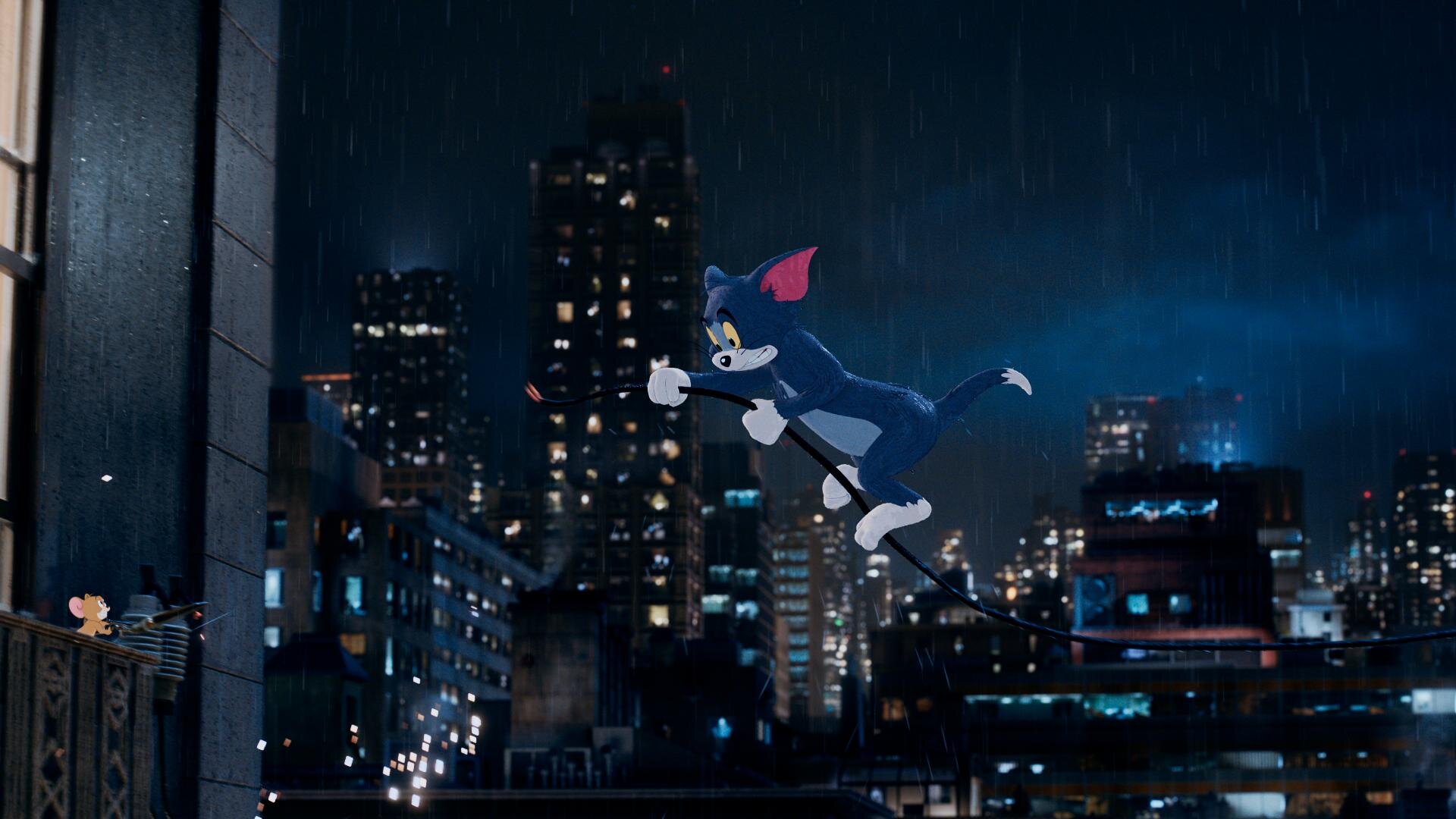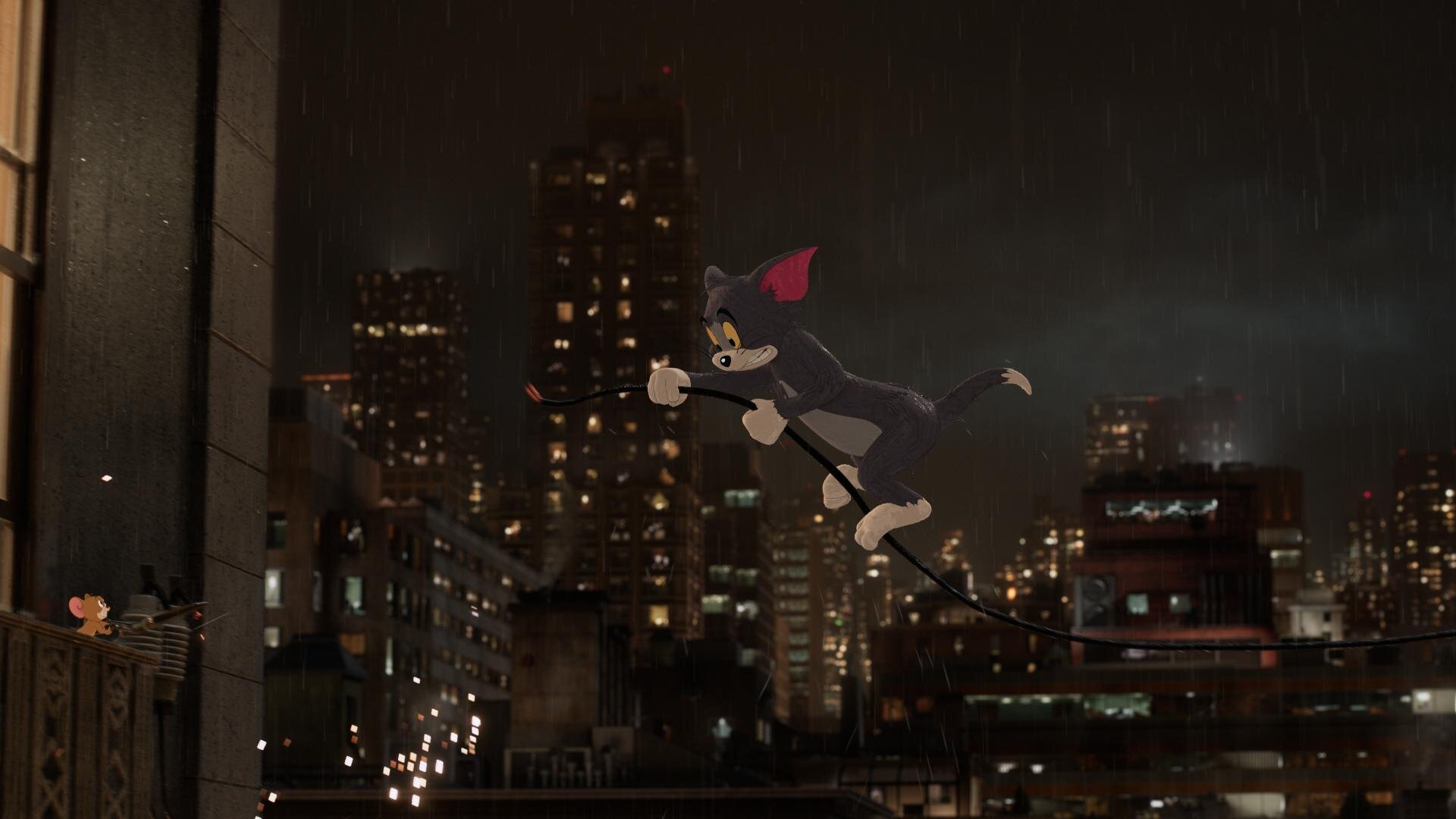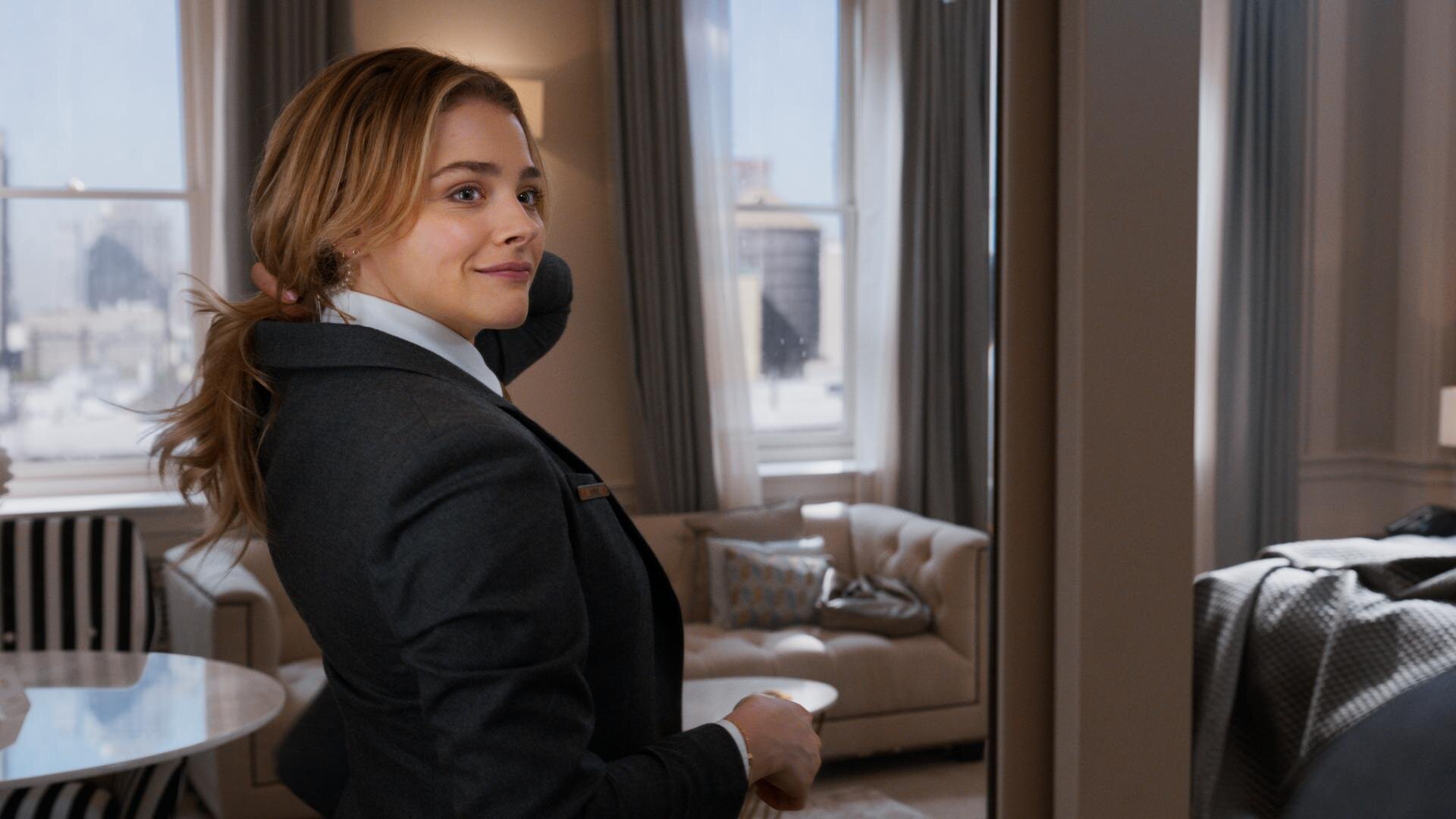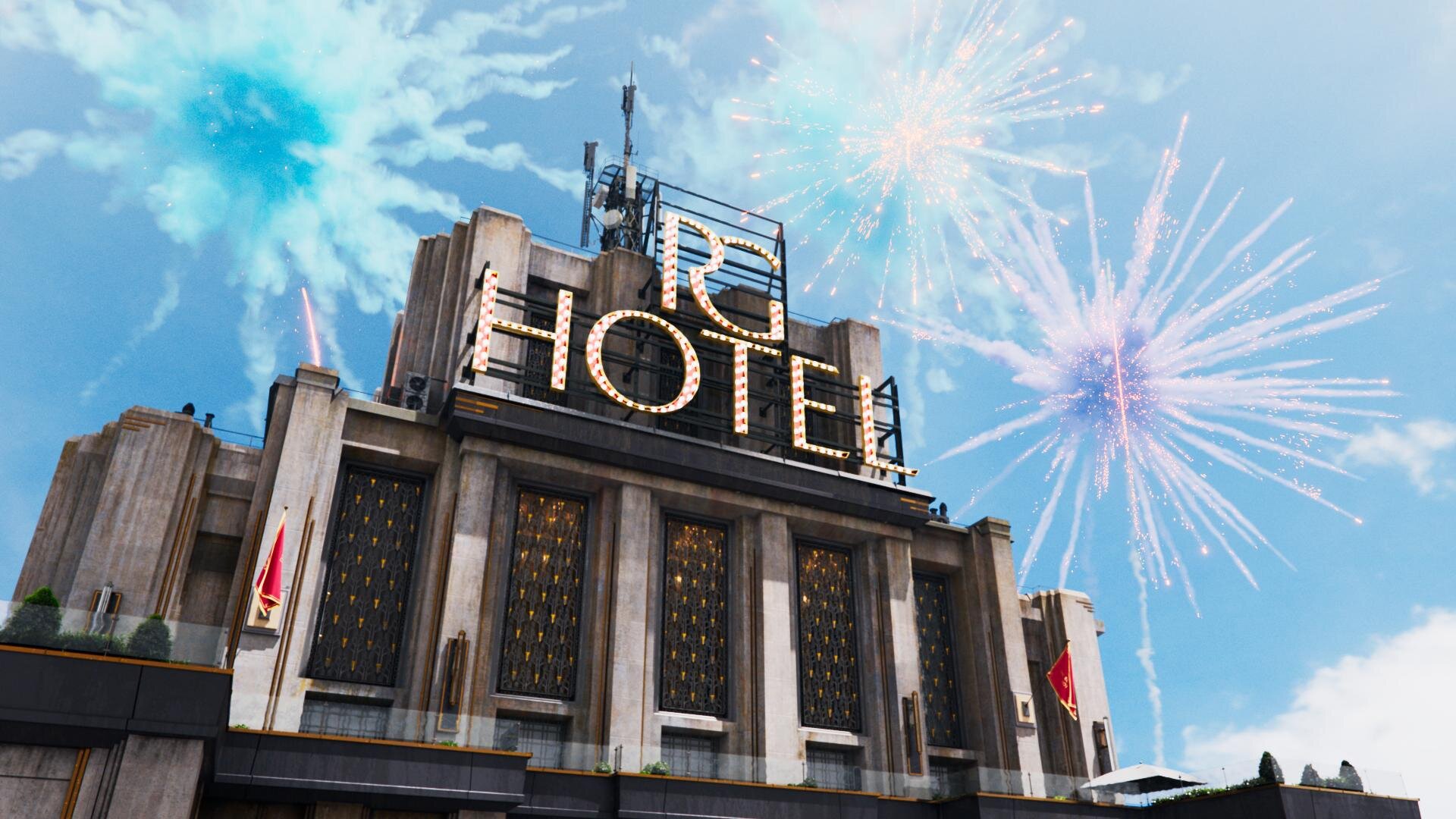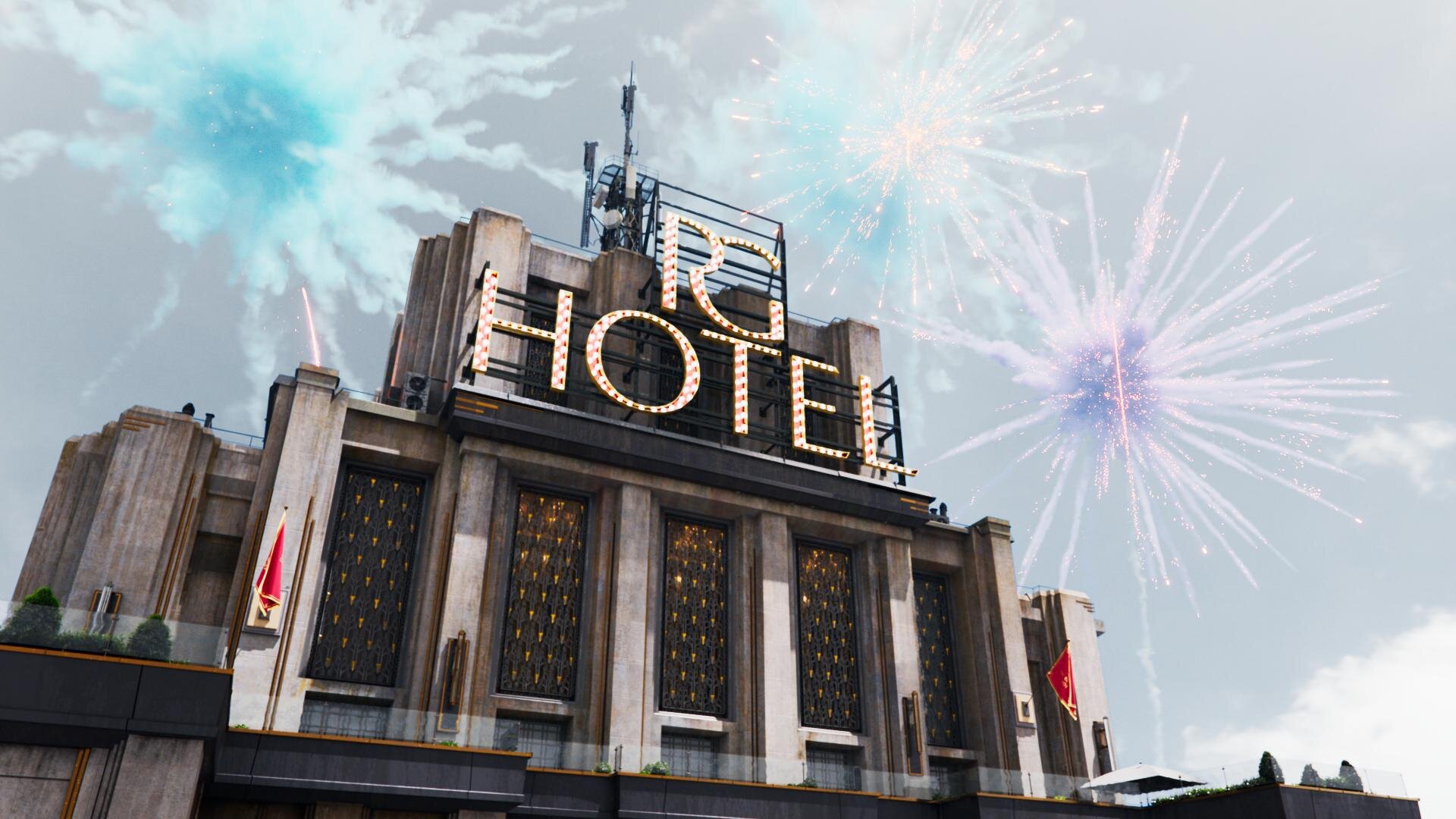Here is a first look at the latest project from Chris Williams and Netflix that I graded. An awesome project with an animation A-team. Let me know what y’all think.
Space Jam: A New Legacy - Multiple Worlds, Multiple Deliveries.
Hey Everybody! Space Jam: A New Legacy directed by Malcolm D. Lee is out today. I wanted to take a second to highlight the super slick color workflow which allowed us to work on multiple versions concurrently.
Capture
Space Jam: A New Legacy was masterfully lensed by Salvatore Totino. The two primary capture mediums were 35mm Kodak film and the entire lineup of Arri cameras, mainly the LF. The glass used was Zeiss Supremes and Master Primes. There were also a handful of scans from archival films which were used as plates for animation.
VFX
ILM was running point for the VFXs on this show. Grady Cofer and his team were a dream to work with. There is a reason ILM continues to be the best in class. The knowledge and expertise ILM employs is second to none. Early on Grady connected me with their head of color science, Matthias Scharfenberg. I thought I knew what I was doing when it comes to color science until I saw what Matthias had going on with CTL and Nuke. I learned a lot from our chats. He was super gracious in sending over his Nuke scripts which allowed me to build a Baselight transform that matched ILM’s pipeline. This insured a one-to-one representation of their stellar work.
Two Worlds, One Grade
The show can basically be broken down into two looks. In “Space Jam: A New Legacy” there is the real-world and the Warner Bros Serververse.
We chose an analog celluloid vibe for the real world. The Serververse has a super clean, very 1s and 0s look to it. Most of the real world is shot on film or is Arri Alexa utilizing film emulation curves paired with a grain treatment. Some sequences have a mix of the two. Let me know if you can tell which ones😉.
The look of the digital world changes depending on where the characters are in the Serververse. The base look of the Serververse is the vanilla ACES ODT with restricted primaries in the mid-tones complimented by exaggerating the saturation for highly saturated colors.
All the other looks are riffs off this base LMT with the exception of the library classics. These were graded to look like their existing masters and the new footage was matched in.
Multiple Deliverables, One Timeline
The challenge of this show, beyond the sheer number of VFX and moving parts, was the delivery schedule. The Post Supervisor Lisa Dennis asked to have the theatrical version and the HDR video versions delivered days apart. To hit the dates requested, I graded simultaneously in HDR and SDR. I did most of the heavy lifting in HDR PQ 1000nits. Then I trimmed at 14FL to ensure the reel was ready for filmmaker review. Poping back and forth between outputs was made possible by two great tools. Firstly, I used ACES 1.1 color management to normalize all the different sources into one grading space.
Secondly, I used Baselight’s “Bypass Categories” functionality to if/then the timeline. Basically, I had one timeline that would represent itself differently depending on the output selected. Different layers were toggled for different sources and outputs. The LMTs used often had SDR and HDR versions to further exacerbate the combinations. This was a critical hurdle to overcome and the Baselight gave me the tools to accomplish the organization of a very complicated timeline with ease.
Approvals
The Color sessions were supervised by Malcolm, Sal, and Bob Ducsay. We used Nevion and ClearView for remote sessions, but most of the work was done in-person on the lot here in Burbank. The Animated sequences were supervised by Spike Brandt and Devin Crane. These guys are animation heavyweights, so very cool to be in such good company for an animation nerd like me.
Most of the tweaking on the animation was for continuity fixing. A few of the shots we composited for final in the Baselight. This gave Devin and Spike a little extra creative freedom than a baked shot would have.
Reference for Tweety’s floor
After all the color decisions were made, Malcolm had his final pass and the masters were created. All deliverables from that point were sub-masters from the hero PQ deliverable. These included deliverables such as the Dolby Vision Theatrical version and 709 SDR version derived from the Dolby XML metadata.
Go See It!
Thanks for reading how the look of this candy-colored revival came together. Working on Space Jam was a wild ride. I had to tap into my background in photochemical film processing and knowledge of the latest digital grading techniques to create unique looks for all the different cinematic worlds visited. The film is a nostalgic love letter to the rich history and legacy of the Warner Bros. Studio. I couldn't be more proud of the Warner Color team, especially Leo Ferrini and Paul Lavoie. A big thanks to you guys! Putting this film together was a monumental task and I am ecstatic with end result. Check it out in theaters and on HBO Max today!
Tom and Jerry
Tom and Jerry: A global finish during a global pandemic.
“Tom and Jerry” is out today in theaters and on HBO Max! I’m excited to share how we built the color on two continents for these classic characters.
Communication
Arguably, the most crucial aspect of finishing this film is how Warner Bros Post Production Creative Services was able to support and complete this project during some of the most restrictive months of the pandemic. Key to the success of this was the communication between Burbank and London. Paul Lavoie(DI Manager), my long-time partner in crime, headed up the Burbank operations while Ann Lynch(Post Supervisor) and Alan Pritt(Post Production Manager DLL) kept everything moving along in London between editorial and VFX. All of this was over email, teams, and phone calls since travel was prohibited. The challenge here was keeping everyone on the same page between the two different timezones. Later on, we found out that would also be one of the project’s greatest strengths.
VFX
Framestore London did the VFX shots for the show. There were numerous versions of every shot, right up until delivery, and a couple after, you know… the usual. Framestore received ACES AP0 EXRs and returned the same back once work was complete with one key difference. Aside from the plates having beautiful animation when they returned they also acquired a number of matte channel layers in the EXR. Each character had mattes for their body, eyes, drybrush, and any props they were handling. This made for some extra prep prior to color, but it paid off big time when we started the grade.
Putting it Together
Conform and color prep was completed at DeLane Lea by Otto Rodd(DI Editor DLL). While we were sleeping in LA, Otto would cut in the night’s deliveries from VFX and connect all the mattes for use in the grade With the number of characters and the granularity of the mattes, I can’t begin to tell you what a herculean effort this was. At the end of his day, he would send the project files for the reels that were updated back to LA where Leo Ferrini(DI Editor) would then take over while Otto slept. Working in this way, we had a 24-hour work cycle with everyone working a normal day shift. There was a lot to do in those 24 hours. For starters, the organization that Otto and Leo imparted onto the timeline was second to none. Each character had its own layer. This layer stayed consistent throughout the whole film even if the character was not in the shot. Tom was on layer 100, jerry on 200, spike on 400, and so on. We didn’t necessarily use all the layers in between, but this kept the timeline nice and tidy. Simply put, we had a lot of layers with the number of characters and props in the film. In Protools sound speak, we used all 128 tracks.
Plate Grade
Character Grade
Covid Grading
Things were looking pretty bad on the covid front when we started the grade in early December. Numbers were spiking most likely due to thanksgiving gatherings and the situation was looking pretty bleak. Tim Story(Director), Chris DeFaria(Producer), and Peter Elliot(Editor) rotated supervising the grade since I was limited to only 2 creatives in the room at a time. We sent Baselight project files to DeLane Lea so that Alan Stewart(Cinematographer) and Frazer Churchill(VFX Supervisor) could review them in London. Working on hybrid animation is sort of like grading two separate films. We had the initial grade for the live-action plate. The direction for the show was bright, vibrant, and colorful. Next, each character got their pass. The characters had very specific targets. We treated them as if it was a cell animated cartoon. There was minimal interactive lighting on them. The idea was to keep the characters consistent throughout the whole film. To achieve this, I composited the VFX character back over my plate grade so that they were unaffected by the color of the live-action plate. Leo and Otto categorized each character's matte layer so that I could solo them out. In this way, it sort of works like a search in email. I could say “search” for all “Tom” shots and then the Baselight would return a reel of only shots that Tom was in. Then I would make corrections based on the character’s environment to ensure that they were perceived the same taking local color into account. This was a huge help in keeping the characters true to their looks throughout the film.
Theatrical Version
The color pipeline for the theatrical grade was ACES AP0 -> ACEScct (grading space) -> Show LMT -> P3D65. ACES 1.1 was used for the P3D65 ODT. We made a temp DCP once the final grade was approved to screen in a room large enough to have everyone together. The team chose to screen in the Ross theater on the WB lot, which was my first time back in a proper theater in ages. Now I know all theaters aren’t the Ross, but it did remind me how much I missed the theatrical experience. There really isn’t any substitute for best-in-class sound and picture exhibition. Hopefully, we can all be together at the cinema soon.
HDR Grading
HDR grading started immediately after the theatrical was locked. We had a tight turnaround since the picture would be available simultaneously in theaters and on HBO Max. The 1000nit p3D65 HDR grade was completed in three days. ACES helped in doing some of the heavy lifting regarding the basic tone mapping. I then came up with an additional HDR LMT to add a bit more contrast and rolled off the highlights softer than what the stock ACES curve was doing. The biggest challenge after that was correcting all the characters. Since the animated characters bypassed the show LMT, their values, especially in the eye whites, were very high for HDR. Again, being able to solo the characters was a huge help for this pass. Once completed, The filmmakers came in for trims and approval on two x300’s on opposite sides of the room to ensure proper social distancing. The Sony x300’s have a wide viewing angle, especially when compared to the newer x310s, but a color skew does appear when you sit too far off-axis. I wanted to make sure, that everyone had a straight shot at the display, even though we were spread apart. Having two was a nice luxury and I’m sure went a long way to making everyone feel safe, comfortable, and confident in the viewing setup.
SDR Trim
Next up was taking ten pounds of HDR and fitting it into the 8 pound rec709 bag. The Dolby trim was done with the same dual x300’s. One set up for 1000nit PQ p3D65 and the other setup for 100nit 709. Dolby analysis was calculated for every shot and then a base Dolby trim was applied as a starting point. I used the HDR and Theatrical passes as a reference and trimmed the SDR to best match given the limitations of a smaller gamut. Really the only bump I had here was the sky. In the theatrical P3 version, we had a very strong cyan sky that was meticulously worked on with shapes and keys to get as vibrant of a sky as possible. Once we put those values into 709 they landed out of gamut.
Blues twisting towards magenta as they reach the boundary of the 709 gamut.
Imagine a car headed straight for a brick wall. At some point, the driver needs to turn either left or right. I guess the other option would be to crash into the wall but in this analogy that would be clipping and we don’t want that. If the driver goes left he heads towards the magenta side of blue if he goes right he goes towards the cyan side of blue. Dolby in this case took our cyans and turned left. This resulted in a more magenta sky which didn’t look bad, it was just not as intended. To remedy this, I used the Dolby secondaries to swing the blue/cyan values away from magenta and back towards the original cyan. The trim took about a day and a half. Once completed we had one more approval session with only one note!
Correcting the blue values to twist towards cyan as they reach the boundary of the 709 gamut.
Deliverables
Next, it was time to create the masters. The Theatrical had a p3D65 2.6 gamma DSM created, along with an XYZ 2.6 gamma DCDM. We also archived an ACES master for future remastering, plus an un-graded ACES archival master for preservation. The HDR version was rendered out as 1000nit p3D65 PQ tiffs and then placed into a rec2020 gamut by Julio Meganes(color assistant) in MPI’s Media Ops department. A Dolby XML file containing the metadata recipe to get to the 709 color trims was exported from the Baselight. Julio imported that into the Transkoder and married it to the HDR picture. From there, the final audio was synced up and many sub-masters in various formats were created for servicing and distribution.
Thanks for Reading!
Thanks for taking the time to read about how the sausage was made. It was a truly collaborative effort leveraging the strengths of Warner Bros Post Production Creative Services’ global footprint. I couldn’t be happier with the way the project turned out and am excited to hear what y’all think in the comments below. Now grab the family, and some popcorn and go watch Tom and Jerry destroy the Royal Gate Hotel!.
